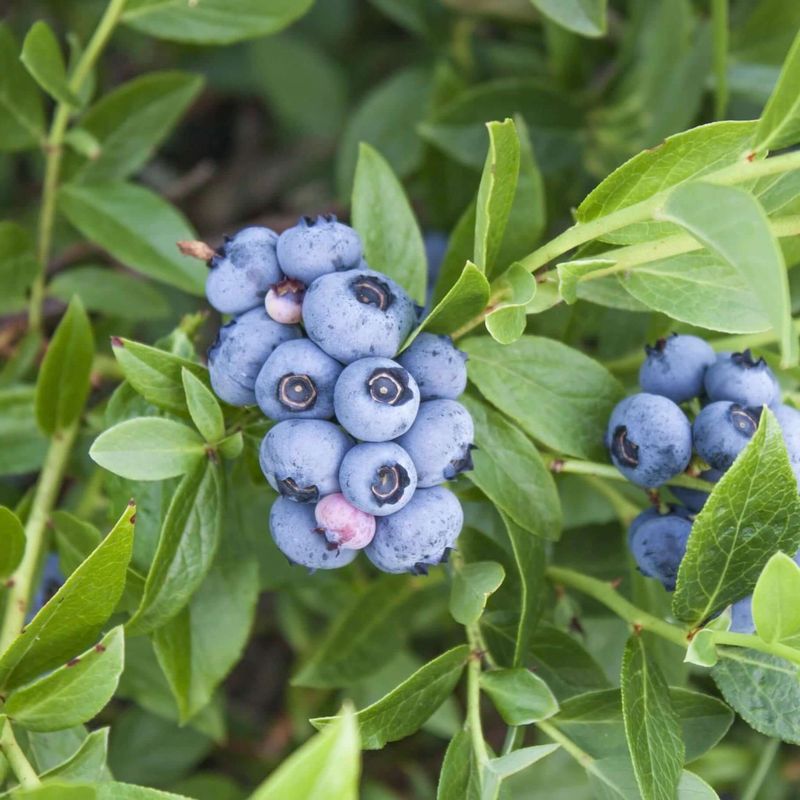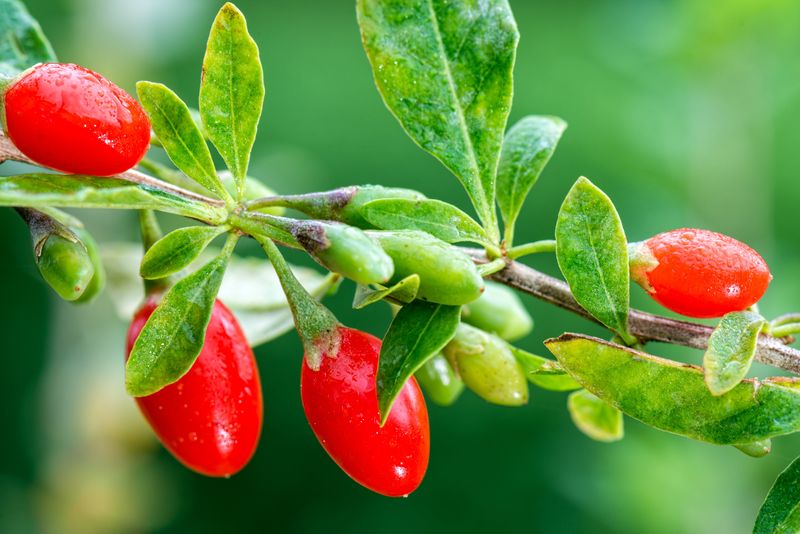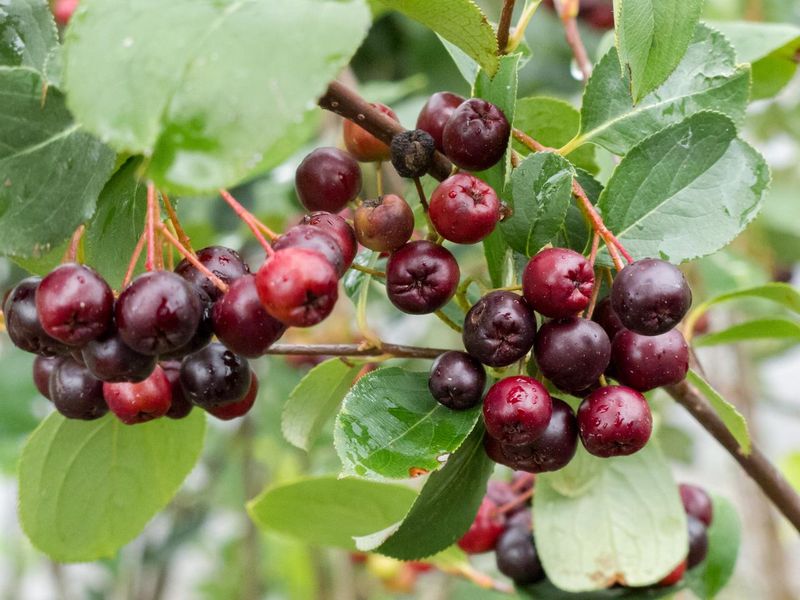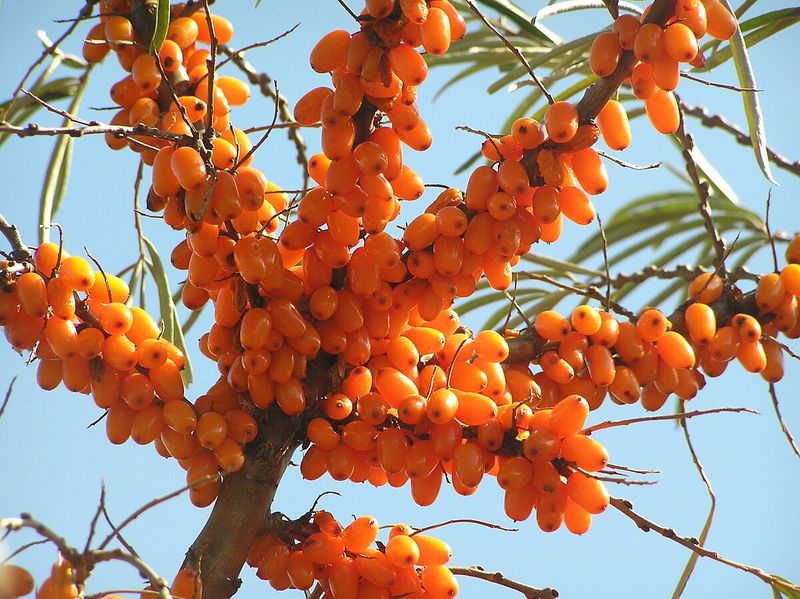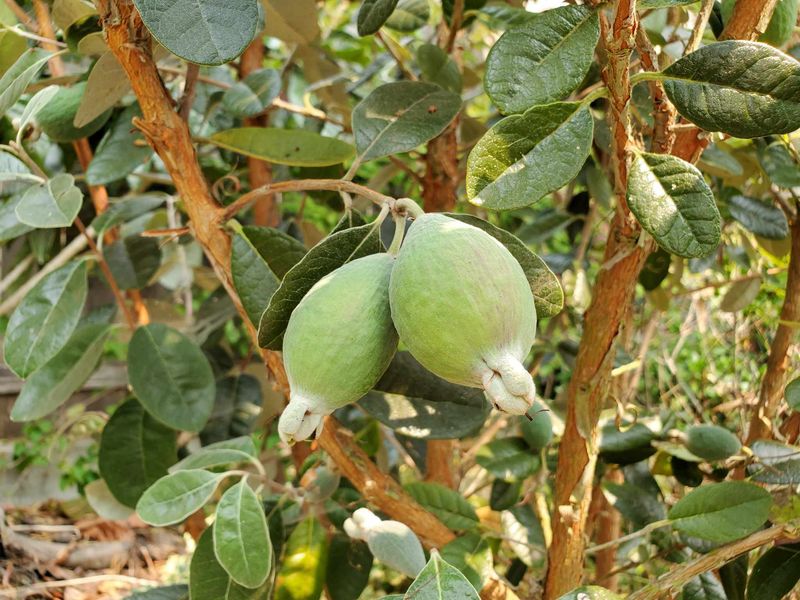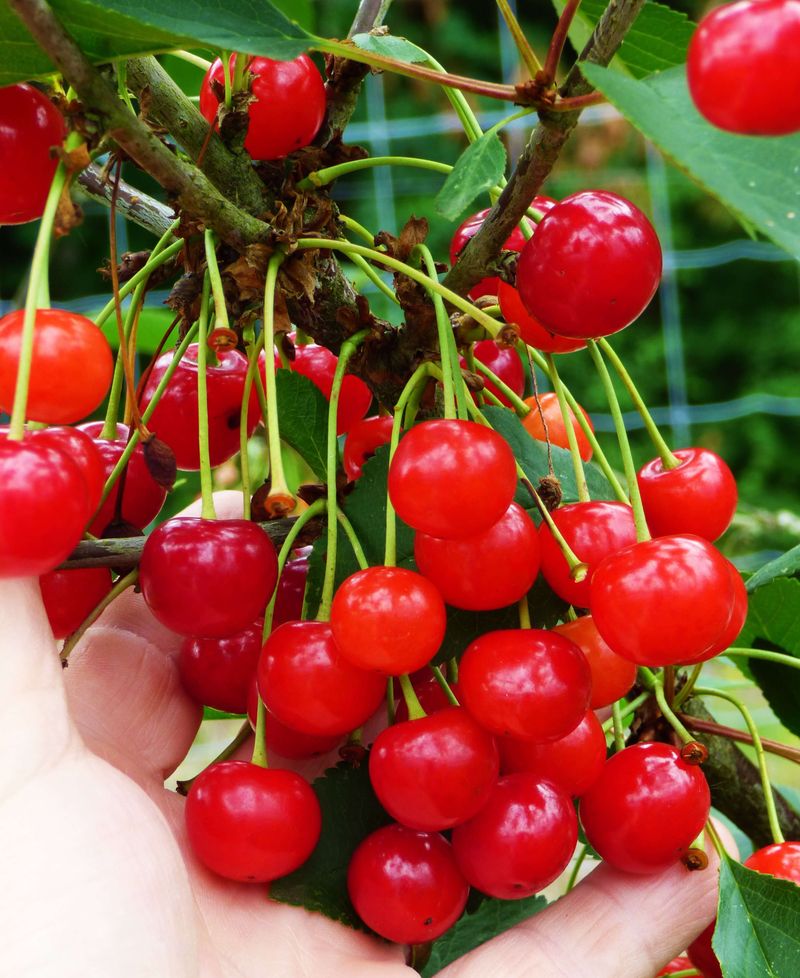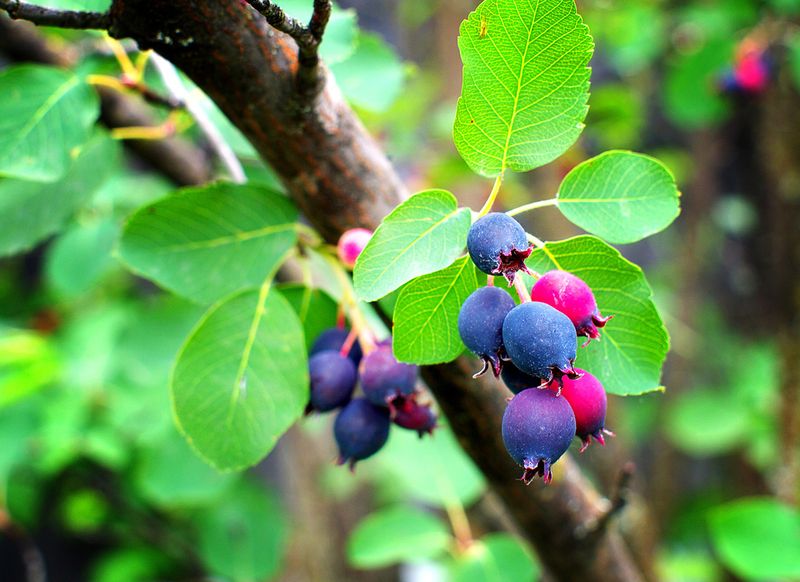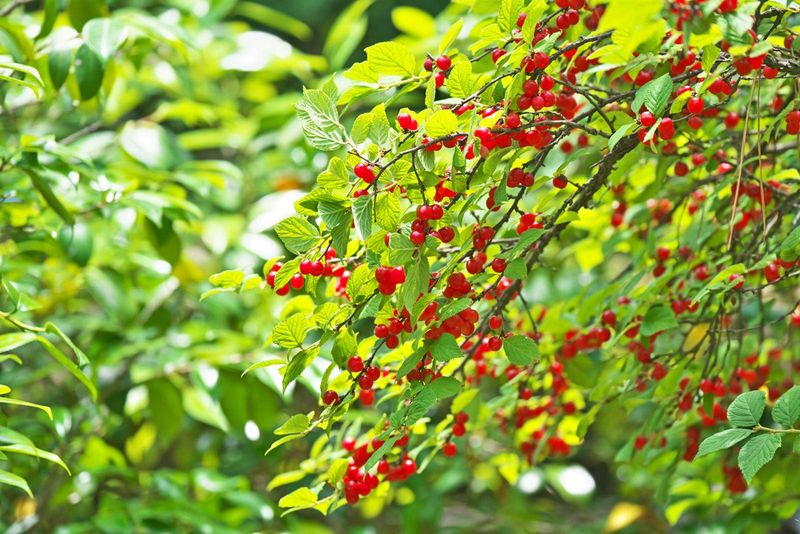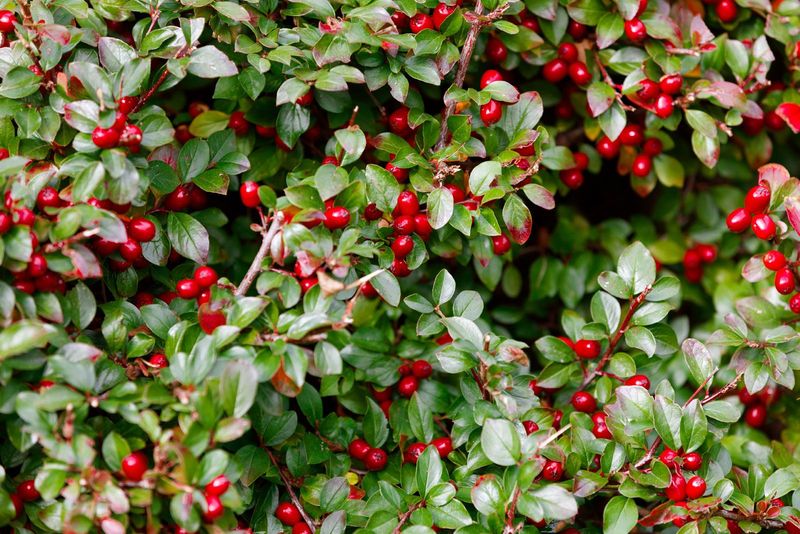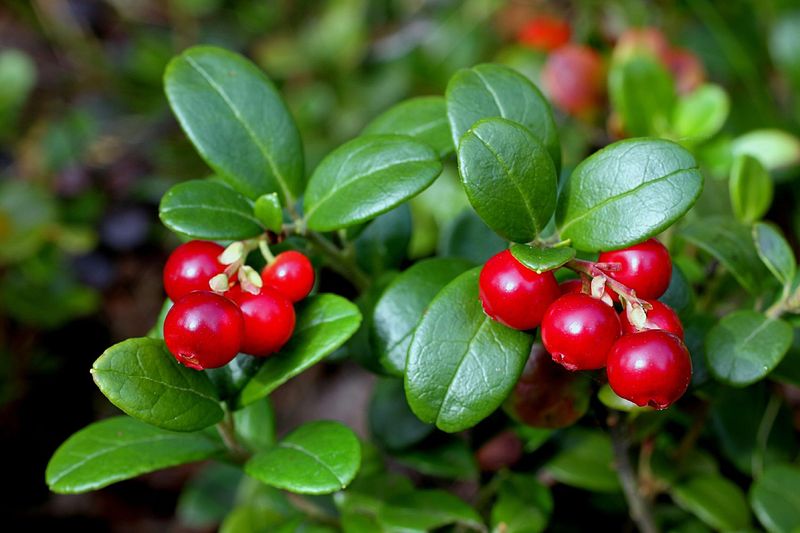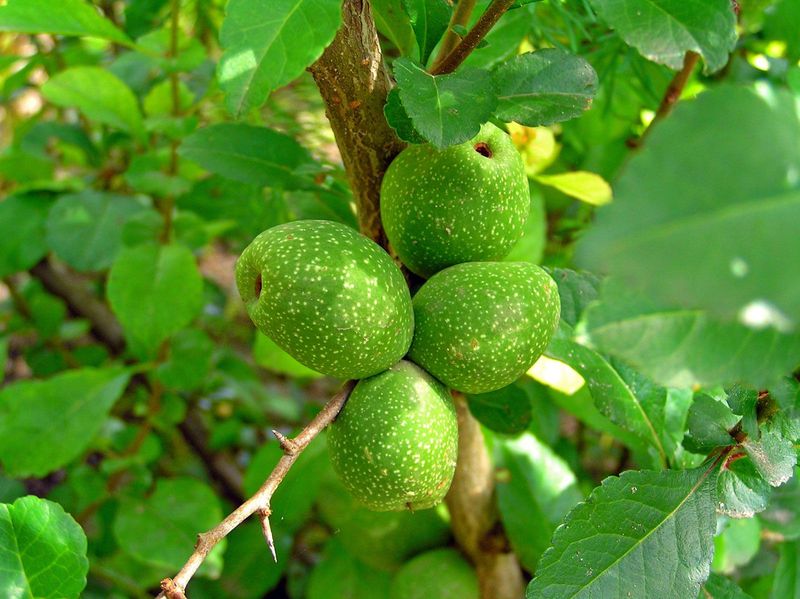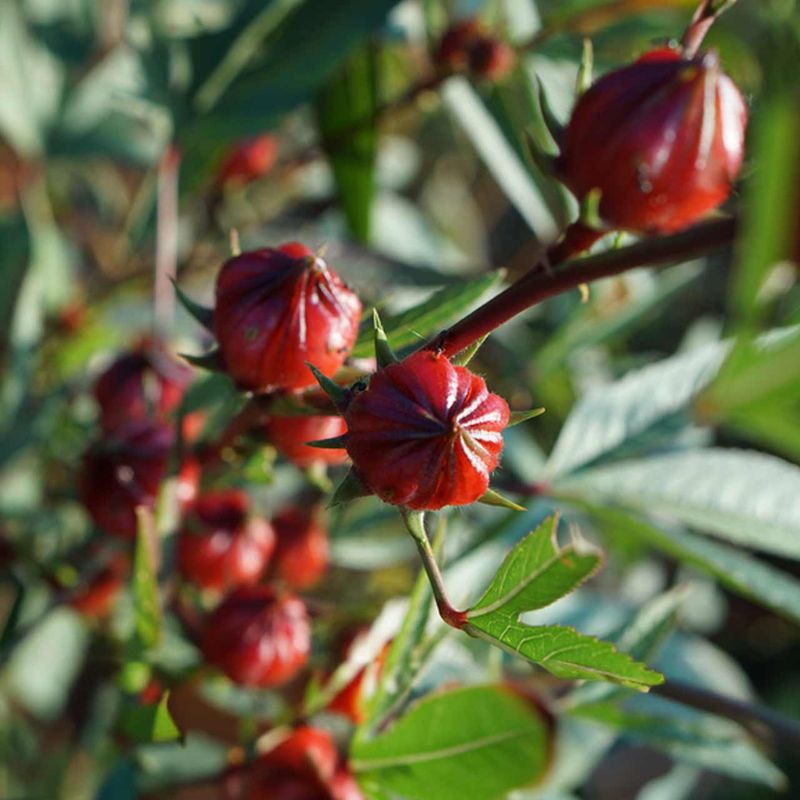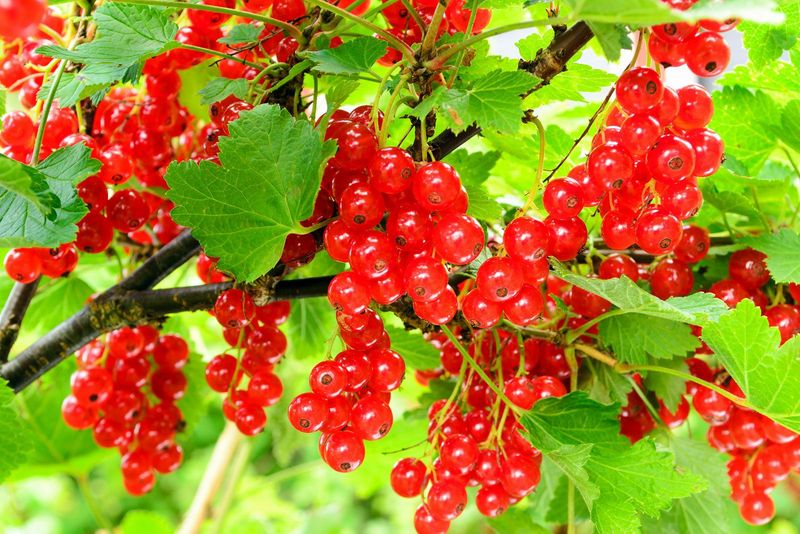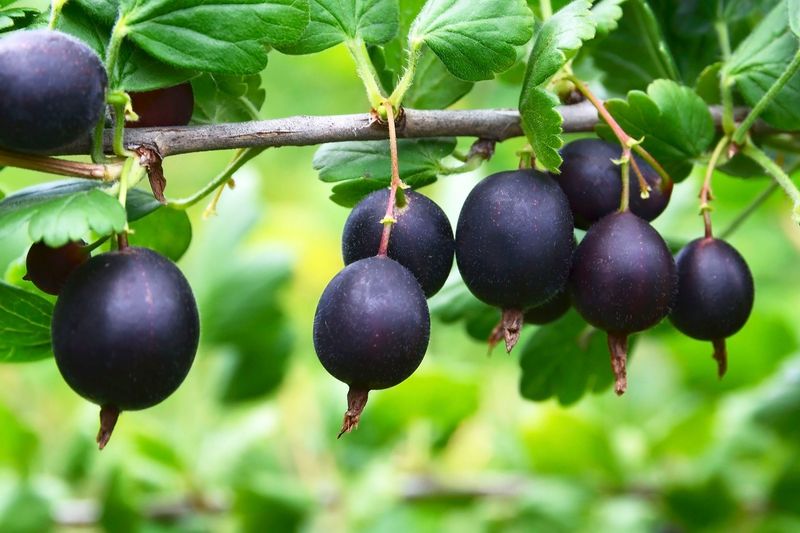Edible landscaping is a growing trend among homeowners and garden enthusiasts who wish to combine aesthetics with practicality. This approach integrates edible plants within the ornamental garden design, allowing for both beauty and a bountiful harvest.
Shrubs play a crucial role in this, offering structure, year-round interest, and delicious fruits or leaves. From the familiar to the unexpected, here are 15 unique shrubs that can elevate your garden’s look and flavor.
1. Blueberry Bush
Blueberry bushes are a garden favorite, known for their nutritious berries and ornamental appeal.
The bush boasts dark green leaves, turning a vibrant red in the fall. Blueberries thrive in acidic soil, making them ideal for those with specific garden conditions.
Plant in a sunny spot for the best fruit production. Regular pruning ensures a healthy yield and keeps the bush in shape.
Enjoy fresh blueberries right off the bush or incorporate them into desserts and preserves. Their compact size makes them suitable for small gardens and container planting.
2. Goji Berry
The goji berry shrub is celebrated for its antioxidant-rich berries and easy growth. Originating from Asia, it’s adaptable to various climates. The small, red berries are slightly tart but sweet, perfect for snacking or drying.
The shrub itself is hardy, preferring well-drained soil and full sun. Prune regularly to maintain its shape and encourage fruiting.
Goji berries can be added to smoothies, salads, or eaten directly. This shrub brings a touch of exoticism to any garden, with minimal care requirements.
3. Aronia (Chokeberry)
Aronia, or chokeberry, is a resilient shrub producing clusters of dark purple berries. While tart when raw, they transform beautifully in jams and baked goods. Native to North America, they adapt well to various soils.
This shrub offers three-season interest, with spring flowers, summer berries, and brilliant fall foliage. Plant in full sun for the best berry production.
Regular watering ensures optimal growth. Aronia’s high antioxidant content makes it a healthy addition to the garden, both visually and nutritionally.
4. Sea Buckthorn
Sea buckthorn is a hardy shrub known for its vibrant orange berries filled with vitamin C. Adaptable to harsh conditions, it thrives in coastal and sandy soils. The silvery-green foliage adds a unique texture to garden layouts.
Berries are tart but can be used in juices, syrups, and skincare products. Plant in full sun to encourage fruiting.
This shrub can act as a windbreak or erosion control in landscapes. Sea buckthorn’s resilience and eye-catching appearance make it a standout choice for edible landscaping.
5. Elderberry
Elderberry shrubs are renowned for their medicinal berries and delicate flowers. Found in temperate regions, they thrive in well-drained soil with regular watering. Dark berries are used in syrups, wines, and health remedies.
The shrub blossoms with white flowers in spring, attracting pollinators. Prune annually to maintain shape and encourage fruiting.
Place in a sunny to partially shaded area. Elderberry’s versatility in culinary and health applications ensures it’s both a practical and attractive choice for gardens.
6. Pineapple Guava
Pineapple guava, or feijoa, offers tropical flair with its sweet fruits and striking flowers. Native to South America, it’s frost-tolerant and adapts to various soils. The shrub’s oval leaves provide year-round interest.
Fruits ripen in late autumn, tasting like a mix of pineapple and mint. Enjoy them fresh or in desserts. The shrub requires minimal pruning and can act as a hedge.
Pineapple guava’s exotic appearance and delectable fruit make it a favored choice for edible landscapes.
7. Cornelian Cherry
Cornelian cherry is a versatile shrub bearing small, red fruits resembling cherries. Originating from Europe and Asia, it’s well-suited for temperate climates. The tart fruits are perfect for preserves and syrups.
This shrub’s yellow flowers bloom in early spring, providing early season interest. Plant in full sun to partial shade.
Prune to maintain shape and encourage fruiting. Its adaptability and unique fruit make it a valuable addition to edible landscapes, providing both beauty and taste.
8. Serviceberry
Serviceberry is a multi-stemmed shrub known for its edible berries and stunning blossoms. Native to North America, it thrives in well-drained soil with adequate sunlight. The small, sweet berries are perfect for pies or fresh eating.
White flowers appear in early spring, offering visual appeal and attracting pollinators. Regular pruning helps maintain shape and promote fruiting.
Its seasonal transitions make it a dynamic garden addition. Serviceberry’s delicious fruit and ornamental features make it a cherished choice for gardeners.
9. Nanking Cherry
Nanking cherry is a hardy shrub producing small, sweet cherries perfect for fresh eating or preserves. Native to Asia, it’s well-suited to diverse climates. The shrub’s spring blossoms attract bees and butterflies.
Plant in full sun for optimal fruit production. Prune regularly to shape and encourage new growth.
This drought-tolerant shrub is ideal for low-maintenance gardens. Its vibrant fruit and floral displays make Nanking cherry a delightful and practical choice for edible landscapes.
10. Wintergreen
Wintergreen is a low-growing shrub known for its minty leaves and red berries. Thriving in acidic soil, it’s ideal for woodland gardens. The glossy leaves emit a refreshing aroma when crushed.
Berries appear in late summer, offering a mild wintergreen flavor. Use them in teas and candies. The shrub requires minimal care, thriving in shaded areas.
Its evergreen quality makes it a year-round attraction. Wintergreen’s unique flavor and aesthetic appeal make it a charming addition to edible landscapes.
11. Lingonberry
Lingonberry shrubs produce tart, red berries favored in Scandinavian cuisine. These low-growing shrubs thrive in acidic, well-drained soils, making them perfect for woodland gardens.
Berries ripen in late summer, ideal for jams and sauces. Plant in full sun to partial shade for best results. Minimal pruning is needed, but regular watering is essential.
Lingonberries’ vibrant appearance and unique taste make them a delightful choice for edible landscaping, offering a touch of Nordic flair to gardens.
12. Quince Shrub
Quince shrubs are an intriguing option for those interested in adding unique flavors to their edible landscape. The fruit, resembling a cross between an apple and a pear, is aromatic and ideal for jams and jellies. Quince is hardy and can adapt to a variety of climates.
These shrubs produce stunning blossoms in spring, adding ornamental value before the fruit appears. Their fruit ripens in late autumn, offering a delightful fragrance that permeates the garden.
To cultivate quince, provide well-drained soil and full sun for optimal growth. They require minimal care but appreciate occasional pruning to maintain their shape.
The fruit can be used in a variety of culinary dishes, prized for its distinctive taste and texture.
13. Hibiscus Sabdariffa
Hibiscus sabdariffa, or roselle, is known for its vibrant calyces used in teas and jams. This tropical shrub prefers warm climates and well-drained soil. Its striking red flowers add a splash of color to gardens.
Harvest calyces before flowering for the best flavor. The shrub requires regular water but tolerates heat well. Roselle’s unique taste and visual appeal make it a popular choice for edible landscapes, offering both beauty and a refreshing harvest.
14. Currant Bush
Currant Bush
Currant bushes are compact, easy to grow, and yield delicious berries that are perfect for culinary use. They thrive in cooler climates and prefer well-drained soil with some organic matter.
Their berries, available in red, black, or white varieties, are high in vitamin C and are ideal for jams, jellies, and juices. The bush itself is attractive, with its serrated leaves and clusters of colorful fruit.
Regular pruning and mulching will keep currant bushes healthy and productive. Planting multiple varieties can enhance pollination and increase your harvest.
15. Jostaberry
Jostaberry is a hybrid shrub combining the flavors of blackcurrants and gooseberries. Thriving in well-drained soil and full sun, it offers a unique berry experience.
The large, juicy berries are perfect for fresh eating or preserves. This vigorous grower requires regular pruning to maintain shape and fruit production.
Jostaberry’s disease resistance and flavorful harvest make it a valued addition to edible landscapes, providing both taste and visual interest.

